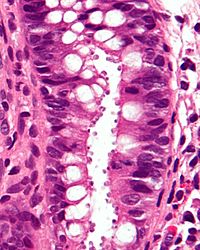
Cryptosporidium oocysts and Giardia cysts-A practical and sensitive method for counting and manipulating small numbers.
Sign Up to like & getrecommendations! Published in 2017 at "Acta tropica"
DOI: 10.1016/j.actatropica.2017.02.008
Abstract: A rapid and inexpensive method is described for accurate and reproducible counting and manipulating small numbers of Cryptosporidium oocysts and Giardia cysts. From a suspension of oocysts or cysts at concentration from 1000 to 5000/mL… read more here.
Keywords: oocysts giardia; manipulating small; cryptosporidium oocysts; small numbers ... See more keywords

Comparison of in vitro viability methods for Cryptosporidium oocysts.
Sign Up to like & getrecommendations! Published in 2018 at "Experimental parasitology"
DOI: 10.1016/j.exppara.2018.03.002
Abstract: The water-borne protozoan parasite Cryptosporidium parvum forms oocysts that can persist for long periods of time in the environment, even though the sporozoites inside the oocysts may no longer be viable, making it difficult to… read more here.
Keywords: methods cryptosporidium; vitro viability; viability methods; cryptosporidium oocysts ... See more keywords

Cryptosporidium oocysts: prevalence in dogs in Abuja, Federal Capital Territory, Nigeria
Sign Up to like & getrecommendations! Published in 2019 at "Annals of parasitology"
DOI: 10.17420/ap6504.216
Abstract: Cryptosporidium is known to be a zoonotic protozoan parasite, located mainly intracellularly causing the disease called cryptosporidiosis, a diarrheic disease of human and animals. Risk factors for dogs’ illness includes exposure to contaminated drinking water… read more here.
Keywords: dogs abuja; infection; cryptosporidium oocysts; cryptosporidium ... See more keywords

Transmission of Cryptosporidium by Fresh Vegetables.
Sign Up to like & getrecommendations! Published in 2022 at "Journal of food protection"
DOI: 10.4315/jfp-22-152
Abstract: Consumption of fresh fruits and vegetables is increasing thanks to the awareness to the benefits to human health. Vegetables may become contaminated by enteric pathogens (protozoan parasites, bacteria and viruses) by irrigation with contaminated water,… read more here.
Keywords: cryptosporidium oocysts; transmission; fresh vegetables; oocysts leafy ... See more keywords